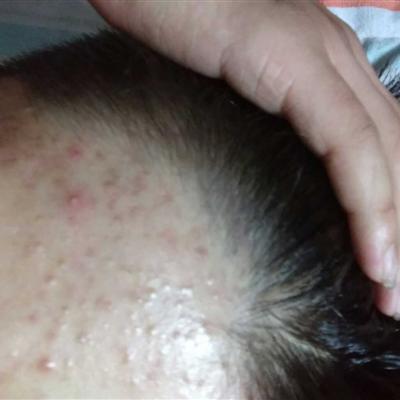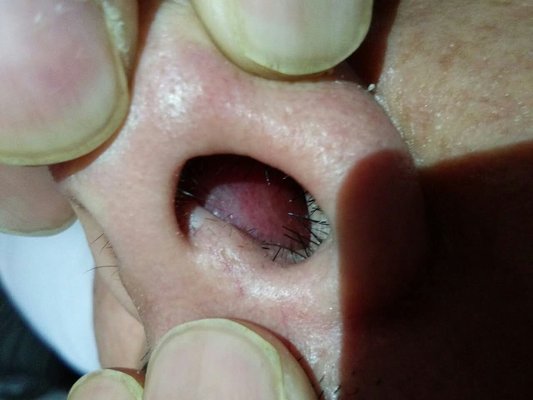Symptoms of orchitis in boys
summary
Epididymitis is a common disease of reproductive system, which mostly occurs in young or middle-aged people. Epididymis is not only the site of sperm maturation, but also the place of sperm storage. It has many physiological functions corresponding to sperm maturation and capacitation. The inflammation of epididymis can affect the function of epididymis, change the internal environment of epididymis, thus affect the maturation of sperm and decrease its fertilization ability; Inflammation can also cause epididymal duct blockage, affect sperm output, which can cause clinical infertility. So the boy's symptoms of orchitis tell us.
Symptoms of orchitis in boys
Performance 1: acute epididymitis etiology: common pathogenic bacteria to Escherichia coli, followed by Proteus, Staphylococcus, Enterococcus and Pseudomonas aeruginosa, chlamydia can also cause acute epididymitis. The pathogenic bacteria enter the epididymis retrogradely through the vas deferens. In addition, bacterial invasion of the epididymis can also cause epididymitis through lymphatic or bloodstream infection, but it is rare. Acute epididymitis is easy to occur in the following clinical situations: ① long term urethral indwelling catheter and urethral instrument examination can induce prostate infection, and then acute epididymitis occurs; ② After prostatectomy, especially transurethral prostatectomy, due to the ejaculatory duct opening in the prostatic fossa, urethral pressure during urination can reverse the flow of urine into the ejaculatory duct. Within 8-12 weeks after prostatectomy, there are a certain number of bacteria in the urine flow; ③ Some patients complained of scrotal injury before acute epididymitis, but not all patients with scrotal injury had acute epididymitis. Pathology: epididymitis can occur on one side or both sides, especially on one side. Acute epididymitis usually starts from the tail of epididymis, with epididymal epithelial edema, desquamation and purulent secretions in the lumen, and then infiltrates into the body and head of epididymis through the stroma, and forms micro abscess. The late scar tissue formed epididymal lumen occlusion, so bilateral epididymitis often caused infertility. Epididymitis symptoms: acute onset, suffering from scrotal distension discomfort, obvious pain, can be released to the same side of the groin area and lower abdomen, affect activity, and often accompanied by chills, high fever, body temperature up to 40 degrees. The epididymis on the affected side was swollen and tender. If it spreads to the testis, the boundary between the testis and epididymis is not clear, which is called epididymal orchitis. When the inflammation is serious, the scrotal skin is red and swollen, the ipsilateral spermatic cord is thickened, and there is tenderness.

Performance 2: chronic epididymitis is more common in clinic. Some patients with acute epididymitis did not get effective treatment or treatment is not complete and turned to chronic. Most of the patients have no history of acute attack and often have chronic attack. Pathology: most of the lesions were located in the tail of epididymis with inflammatory nodules; The whole epididymis can also be sclerotized by fibrous hyperplasia; Scar formation and epididymal duct occlusion can be seen on tissue sections, while chronic inflammatory changes can be found in vas deferens, prostate and seminal vesicle. Epididymitis symptoms: the patient's symptoms are mild, may have a scrotal swelling feeling, pain can be released to the lower abdomen and the same side of the inner thigh; The epididymis of the affected side was mildly enlarged, hardened, with induration, and local tenderness was not obvious; The ipsilateral vas deferens may be thickened, with occasional history of acute attack. If it is bilateral chronic epididymitis, oligospermia can cause infertility.

Performance 3: tuberculous epididymitis, also known as epididymal tuberculosis, is the most common male genital tract tuberculosis. It is generally believed that epididymal tuberculosis is a part of urinary tuberculosis; Epididymal tuberculosis is often accompanied by prostatic tuberculosis or seminal vesicle tuberculosis. Tuberculosis usually goes from kidney to prostate, seminal vesicle and then to epididymis; Some of them are caused by bloodstream infection. The main sequelae of epididymal tuberculosis is incomplete or complete obstruction of epididymal duct and proximal vas deferens, which can be manifested as oligospermia or azoospermia, leading to infertility. Epididymitis symptoms: epididymal tuberculosis general development is slow, pathological changes of epididymis gradually swelling, the formation of epididymal induration, there is no pain or slightly dull pain, epididymis swelling obvious adhesion with the scrotum, the formation of cold abscess after scrotal skin ulceration, outflow of abscess and caseous necrosis tissue, the formation of sinus. In severe cases, the boundary between epididymis and testis is not clear, vas deferens is thickened, showing Beaded changes. Bilateral epididymal tuberculosis can be manifested as azoospermia, leading to infertility.

matters needing attention
The above is the introduction of epididymitis symptoms by relevant experts. Patients with similar symptoms must be admitted to hospital for examination and treatment at the first time, so as not to delay the illness.



















